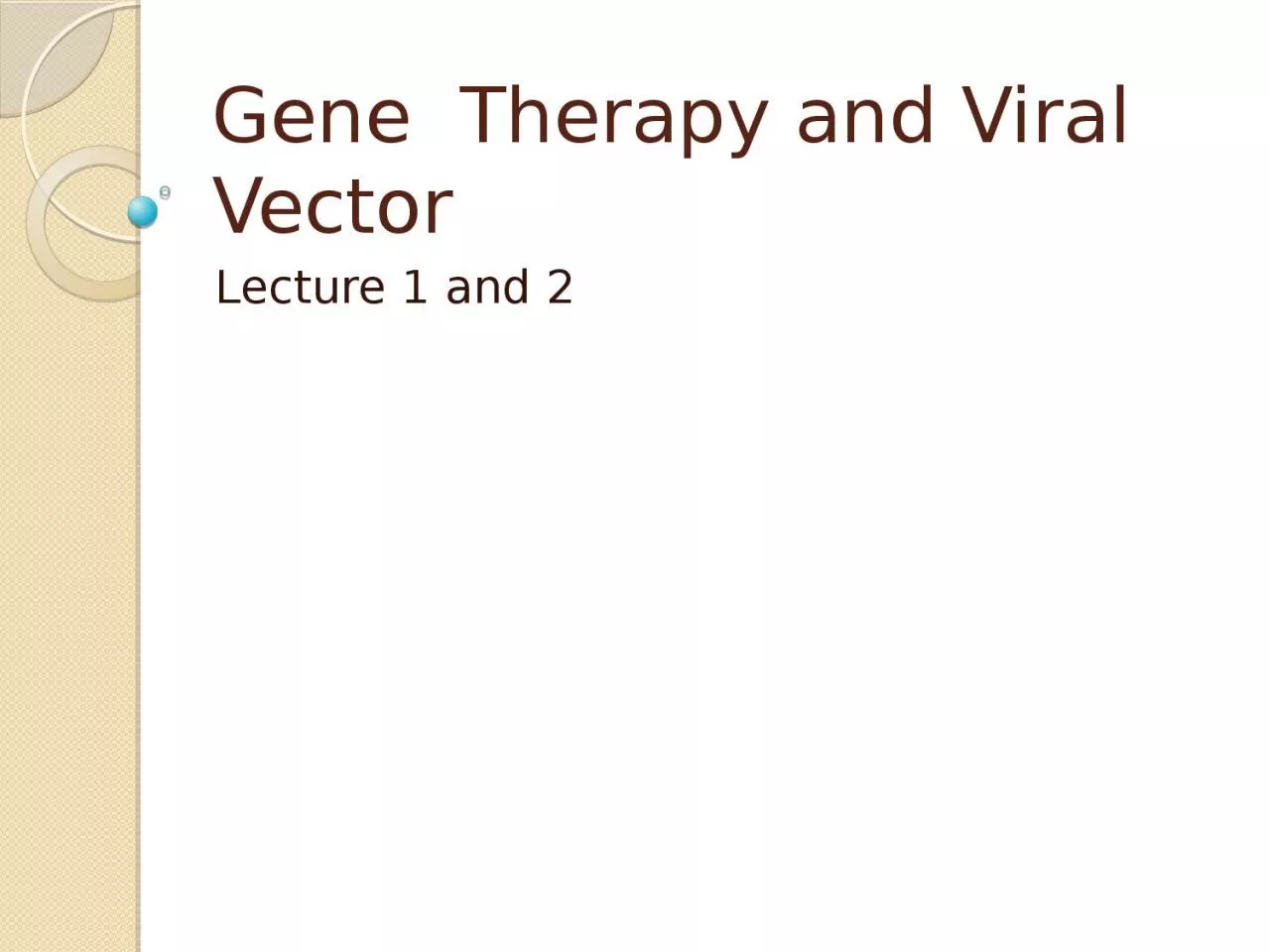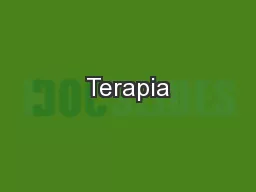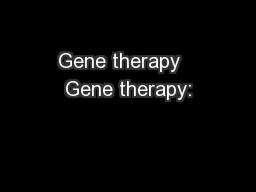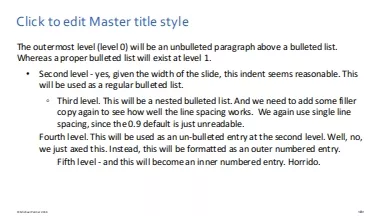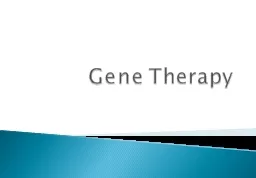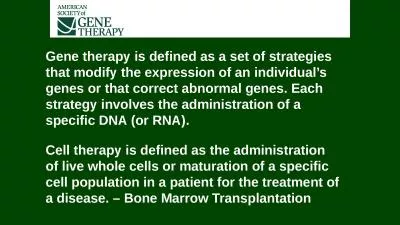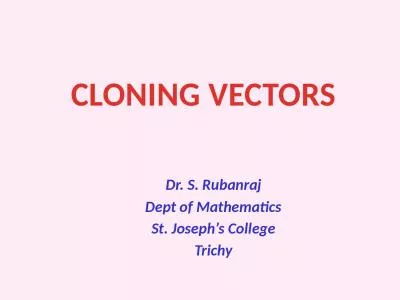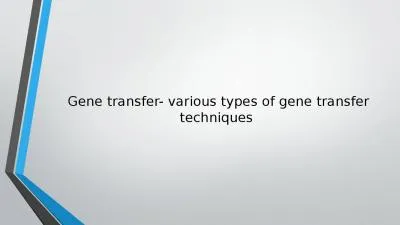PPT-Gene Therapy and Viral Vector
Author : CaringBear | Published Date : 2022-08-04
Lecture 1 and 2 Gene Therapy Definition the introduction of normal genes into cells in place of missing or defective ones in order to correct genetic disorders
Presentation Embed Code
Download Presentation
Download Presentation The PPT/PDF document "Gene Therapy and Viral Vector" is the property of its rightful owner. Permission is granted to download and print the materials on this website for personal, non-commercial use only, and to display it on your personal computer provided you do not modify the materials and that you retain all copyright notices contained in the materials. By downloading content from our website, you accept the terms of this agreement.
Gene Therapy and Viral Vector: Transcript
Lecture 1 and 2 Gene Therapy Definition the introduction of normal genes into cells in place of missing or defective ones in order to correct genetic disorders Approaches Replacing a mutated gene that causes disease with a healthy copy of the gene. Will Herrick. Peyton Group Meeting. March 20, 2013. What Are Adenoviruses?. Linear . dsDNA. virus. 80-100 nm. Nonenveloped. Icosahedral structure:. 1: penton . capsomeres. 2: . hexon. . capsomeres. . Genica. . Prof. . Saggio. Tutor Dott.ssa . Piersanti. Carolin . Tauber. Graziana. . Luciotto. Ludovica. . Taglieri. Veronica . Cacciamani. Bianca . Fabi. Gene . Therapy. . for. Parkinson . Disease. . Gene therapy: . to correct a . genetic defect . by transferring of a . functional normal copy. of the gene into cells. Examples of diseases caused by genetic defect. Ornithine . transcarbamylase. to correct a . genetic defect . by transferring of a . functional normal copy. of the gene into cells. Examples of diseases caused by genetic defect. Ornithine . transcarbamylase. (OTC deficiency). Therapy of enzyme defects: general considerations. How many organs are affected by the enzyme defect: One organ, a few, or all organs?. How severe is the defect?. Can the defect be adequately controlled by conventional treatment?. 6000. inherited human diseases catalogued to date, only a few are currently treatable.. Gene therapy. —introducing functional copies of a gene into an individual with two defective copies of the gene—is a potential tool for treating inherited human diseases.. Gene therapy . is when DNA is introduced into a patient to treat a genetic disease. The new DNA usually contains a functioning gene to correct the effects of a disease-causing mutation. . Gene therapy uses sections of DNA (usually genes) to treat or prevent disease. The DNA is carefully selected to correct the effect of a mutated gene that is causing disease. The technique was first developed in 1972 but has, so far, had limited success in treating human diseases. Gene therapy may be a promising treatment option for some genetic diseases, including . Principle, Requirements, steps and applications Dr. Sudha Kumari Department of Veterinary Microbiology Bihar Veterinary College, Patna Bihar Animal Sciences Un December 1984 NTIS order #PB85-206076 “Where two principles really do meet which cannot be reconciled with one another, theneach man declares the other a fool and heretic. ” –Ludwig Wit Cell therapy is defined as the administration of live whole cells or maturation of a specific cell population in a patient for the treatment of a disease. . – Bone Marrow Transplantation. Bone . Marrow Transplantation for DBA. Rubanraj. . Dept of Mathematics. St. Joseph’s College. Trichy. Vectors . Vector is an agent that can carry a DNA fragment into a host cell in which it is capable of replication. If it is used only for reproducing the DNA fragment, it is called a . Peter Marks, MD, PhD. National Press Foundation. November 17, 2023. Outline. Status of gene therapy and genome editing. Regulatory considerations for genome editing. Regulatory guidance for genome editing. Starter: Comparing DNA processes. Process. What does it do?. How does it work?. PCR (Polymerase Chain. Reaction). DNA Sequencing. DNA Profiling. Gel Electrophoresis. Process. What does it do?. How does it work?. techniques . Content. Introduction. Importance of Gene transfer. Types of gene transfer techniques. Method. Application. Introduction. Gene transfer is to transfer a gene from one DNA molecule to another DNA molecule..
Download Document
Here is the link to download the presentation.
"Gene Therapy and Viral Vector"The content belongs to its owner. You may download and print it for personal use, without modification, and keep all copyright notices. By downloading, you agree to these terms.
Related Documents

